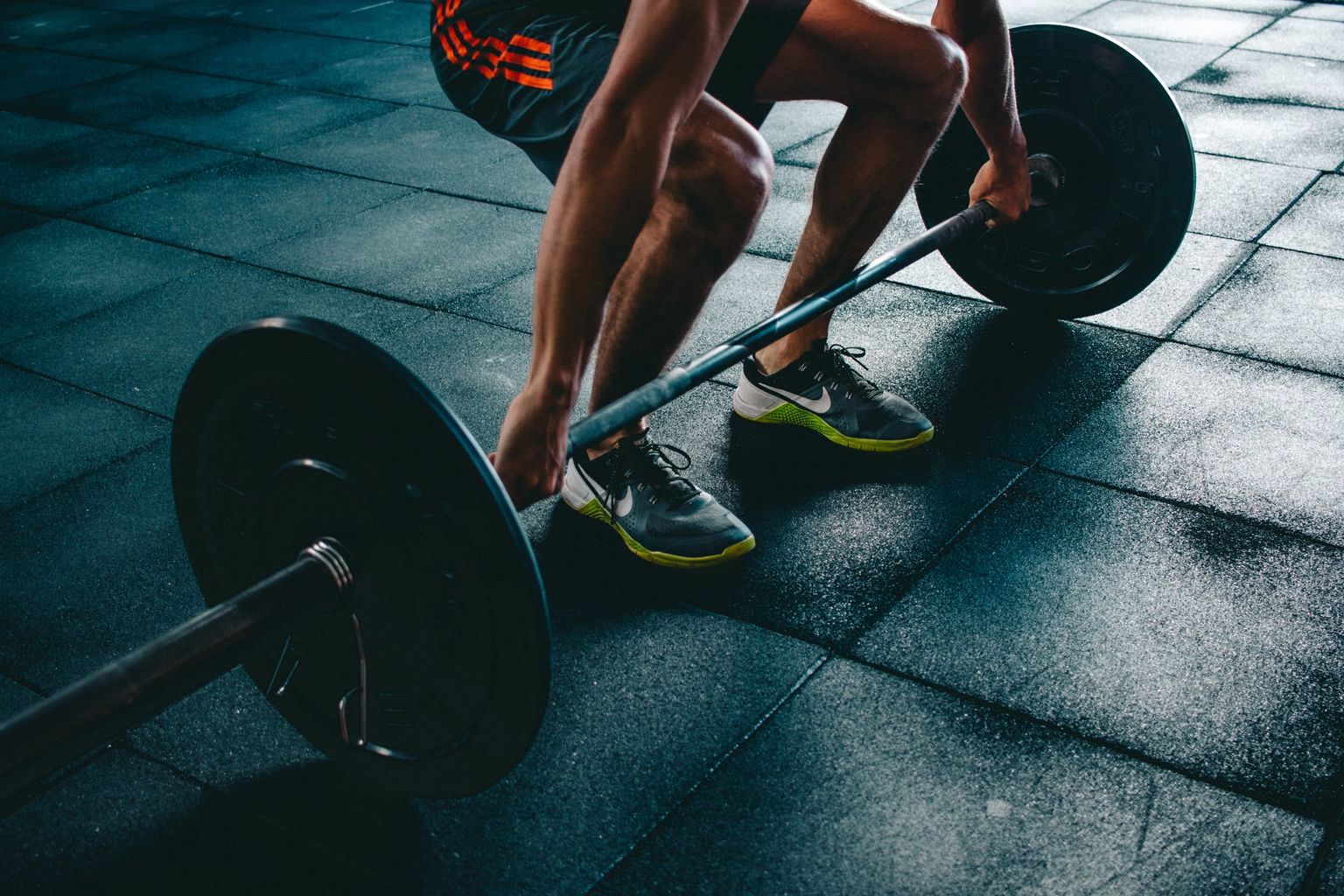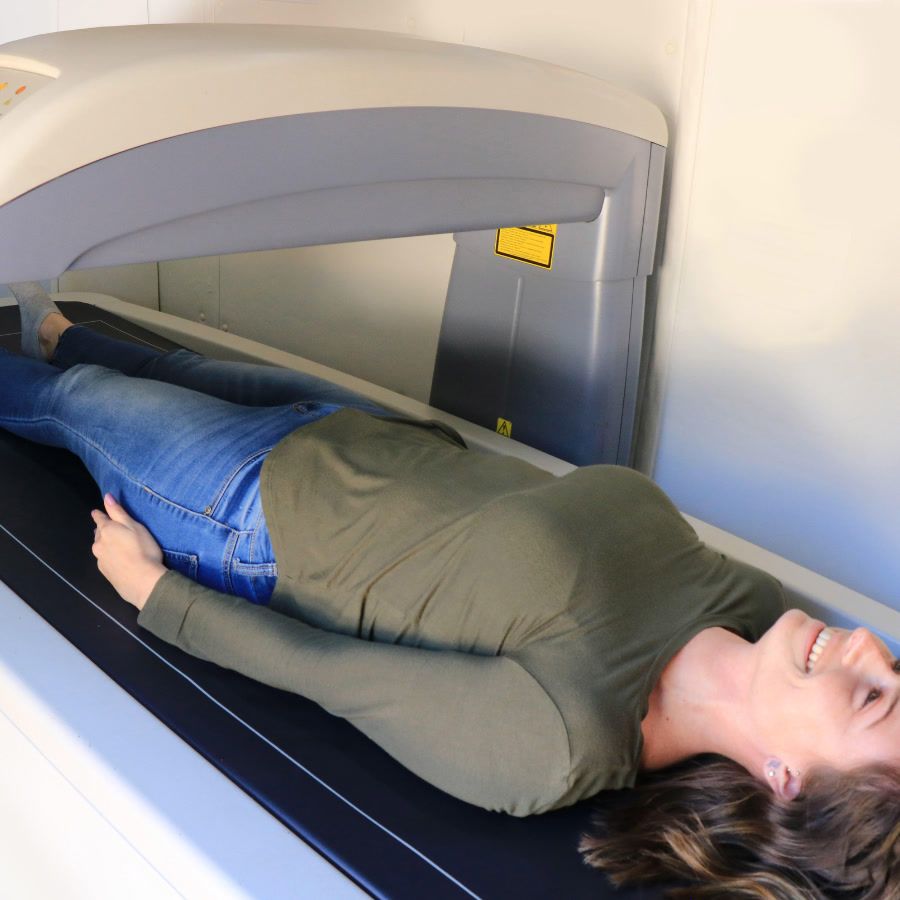Pulled Chest Muscle Symptoms and Strain Diagnosis

Pulled Chest Muscle Symptoms: How to Tell if It’s a Strain—And Not Something Worse
Chest pain is scary. One minute you’re finishing a heavy set of bench press, the next you feel a sharp twinge that makes every breath hurt. Is it a muscle pull—or a sign of a heart attack? This guide breaks down the key symptoms of a pulled chest muscle, how doctors grade the injury (Grade I–III), and, critically, when to seek emergency medical attention.
Quick answer: The most common symptoms of a pulled chest muscle include localized, movement-dependent pain that worsens when you press on the spot, stretch your arms, cough, or breathe deeply. According to the Healthline guide to chest muscle strains, cardiac pain feels more like pressure, often radiates to the jaw or left arm, and is accompanied by shortness of breath or nausea.
Table of Contents
- Chest Muscle Anatomy 101
- Risk Factors for Chest Muscle Strains
- Classic Symptoms of a Pulled Chest Muscle
- How Doctors Grade Chest Muscle Strains
- Pulled Muscle vs. Heart Problem: Red-Flag Checklist
- First-Line Treatment & At-Home Care
- Recovery Roadmap & Return-to-Gym Tips
- FAQ
- Track Your Rehab Progress with BodySpec
Chest Muscle Anatomy 101
Your chest contains several layers of muscle, but most strains involve one of these key muscle groups:
- Pectoralis major: The large, fan-shaped muscle you feel when you flex your chest. It drives pressing, hugging, and throwing motions.
- Pectoralis minor: A smaller, triangular muscle that sits under the pec major and helps tilt and stabilize the scapula (shoulder blade).
- Intercostal muscles: Thin layers tucked between each pair of ribs; they raise and lower the rib cage to power breathing.
Because these fibers attach across the shoulder and rib cage, a sudden stretch or overload—such as a heavy bench press, violent sneeze, or fall—can tear the tissue, as detailed by Medical News Today.
Risk Factors for Chest Muscle Strains
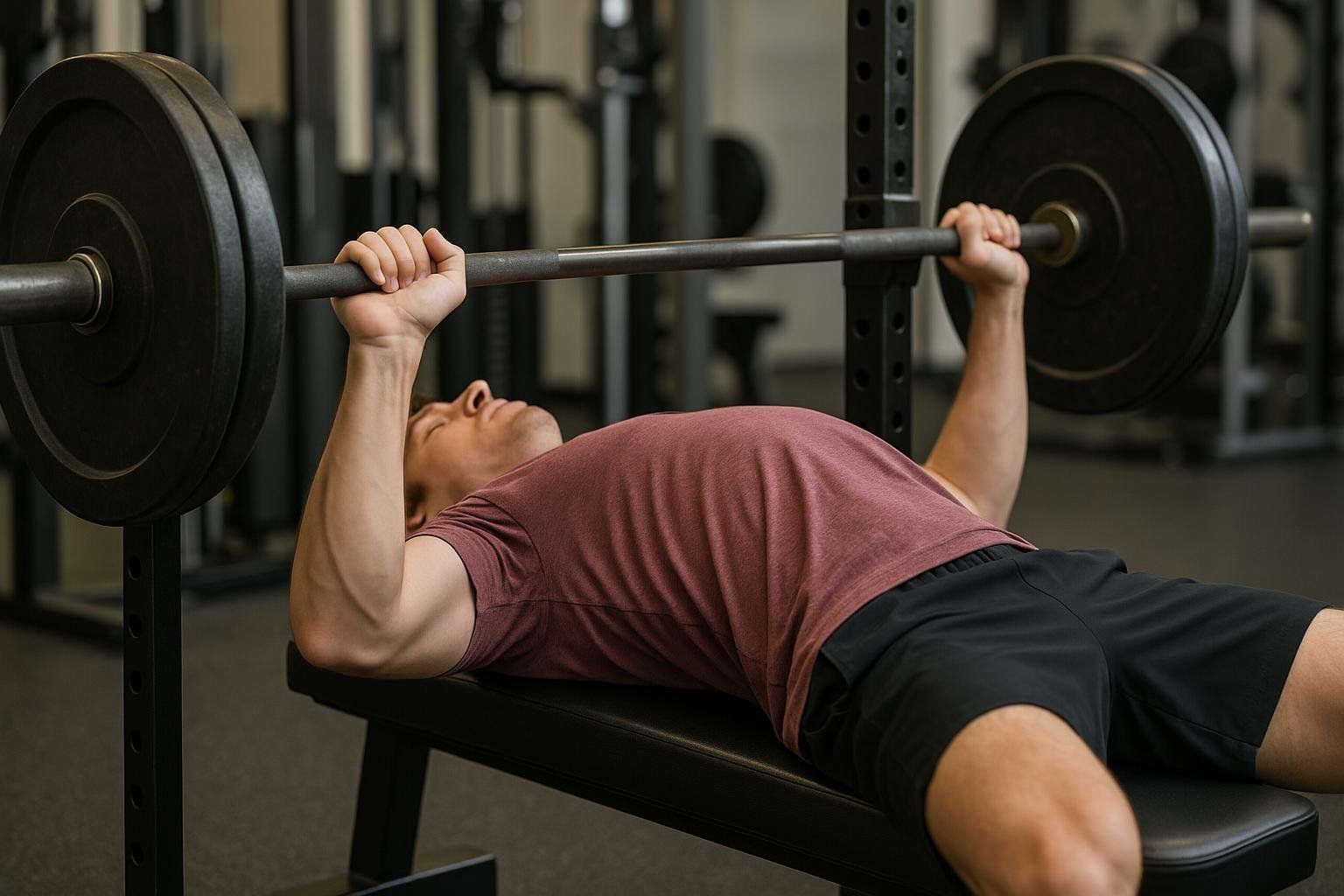
Certain situations make your chest muscles more vulnerable to strain, according to Healthline and the Cleveland Clinic:
- Improper lifting technique (e.g., bouncing the bar off your chest during bench press)
- Insufficient warm-up or poor mobility before intense exercise
- Muscle fatigue from high-volume training or overuse
- Previous shoulder or chest injuries that leave tissue weaker
- Explosive or contact sports (football, wrestling, rugby)
- Sudden, forceful coughing or sneezing that stretches the intercostals
- Age-related muscle elasticity loss or general deconditioning
Addressing these factors—proper form, progressive loading, and balanced programming—reduces your risk of future strains.
Classic Symptoms of a Pulled Chest Muscle
A pulled chest muscle often announces itself with sharp or dull, localized pain, but discomfort isn’t the only clue. Swelling, bruising, a sudden “pop,” muscle spasms, and temporary strength loss can also signal a strain (Healthline). Refer to the table below for a detailed breakdown of common symptoms:
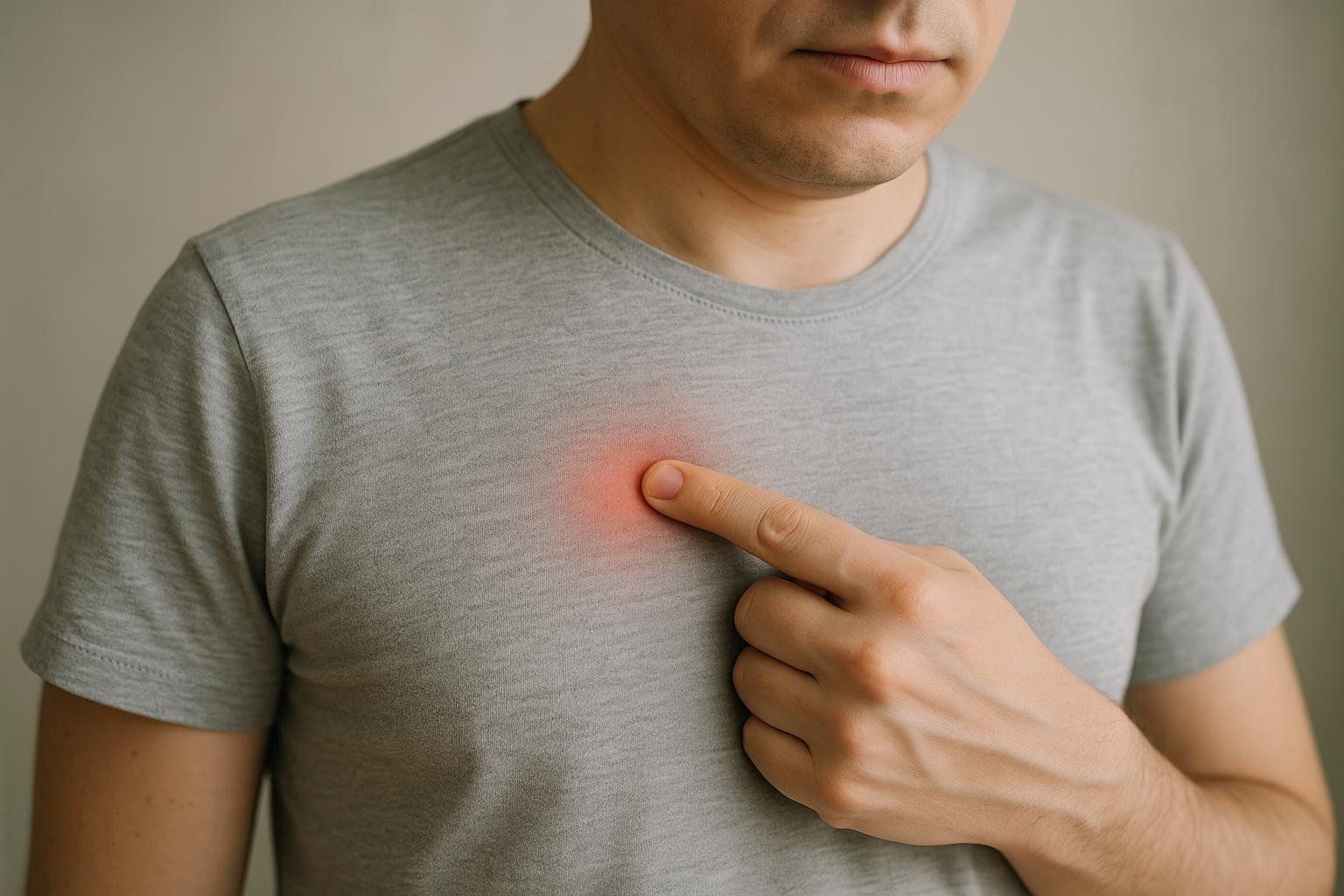
| Symptom | What It Feels Like | Why It Happens |
|---|---|---|
| Localized tenderness | You can point to a single sore spot that hurts to touch | Torn fibers irritate nearby sensory nerves |
| Movement-linked pain | Pain spikes when you raise your arm, twist your torso, push, cough, or breathe deeply | The injured muscle lengthens or contracts against the tear |
| Sudden “twinge” or pop | Some people hear/feel a pop at the moment of injury | Rapid tearing or disruption of muscle fibers |
| Swelling or bruising | Mild discoloration may develop within 24 hours, especially in Grade II–III injuries | Ruptured capillaries leak fluid and blood |
| Muscle spasm | The area feels tight or cramps when you move | Protective reflex to stabilize the injured tissue |
| Reduced strength | Pressing or throwing motions feel weaker | Damaged fibers can’t generate normal force |
How Doctors Grade Chest Muscle Strains
Medical professionals classify muscle injuries by how many fibers are damaged—see the breakdown from Medical News Today:
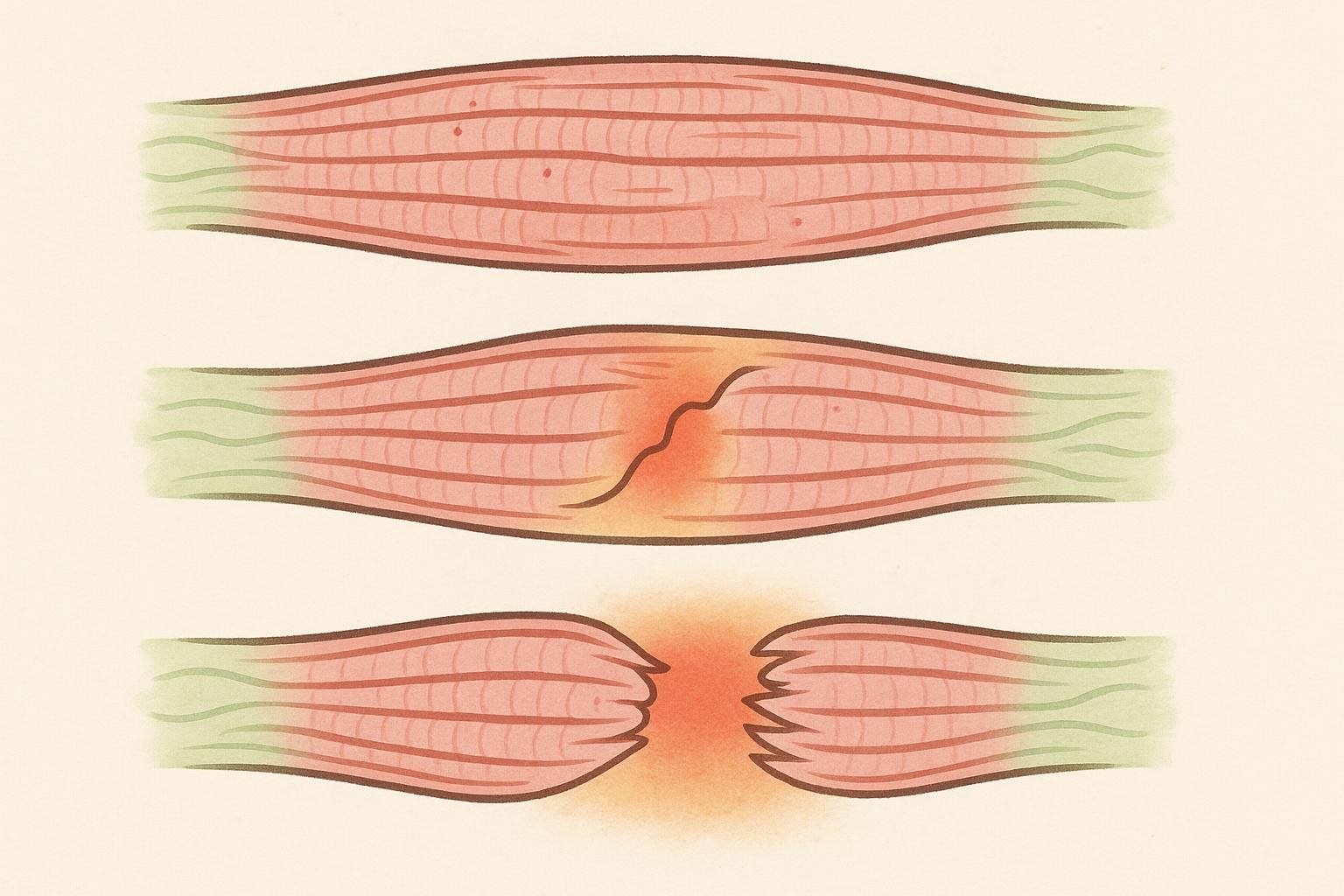
| Grade | Damage | Common Symptoms | Typical Healing Time |
|---|---|---|---|
| I (Mild) | < 5 % of fibers | Soreness, no strength loss | 2–3 weeks |
| II (Moderate) | > 5 %, partial tear | Noticeable weakness, bruising | 4–8 weeks |
| III (Severe) | Complete rupture | Visible deformity, severe loss of function | ≈ 3 months or longer (often surgery) |
Healing timelines come from the Healthline chest-strain guide and Healthcare Associates. Individual recovery varies.
Pulled Muscle vs. Heart Problem: Red-Flag Checklist
Chest pain can be life-threatening. The chart below is only meant to explain typical differences between a muscular strain and cardiac pain. It is not a tool for self-diagnosis. If you have any doubt—or experience shortness of breath, dizziness, fainting, or pressure-like pain—call 911 immediately.
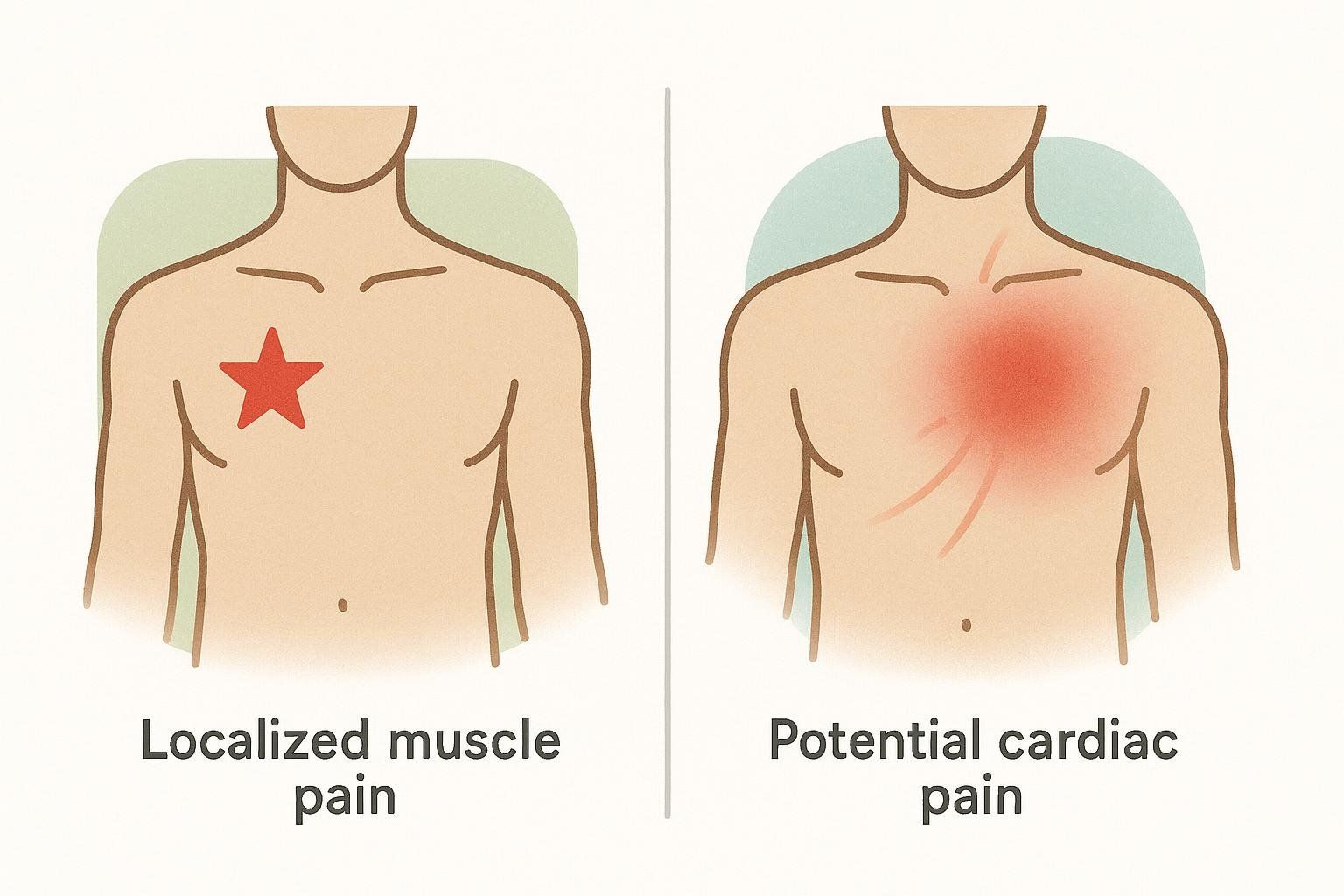
| Feature | Muscle Strain | Possible Cardiac Issue |
|---|---|---|
| Onset | After specific movement or injury | Can occur at rest or during exertion |
| Pain quality | Sharp, stabbing, or sore | Pressure, squeezing, or burning |
| Location | One small area, reproducible with touch | Diffuse center chest, may radiate to arm, jaw, or back |
| Triggered by | Moving arms, coughing, deep breaths | Physical exertion, stress, big meal |
| Relieved by | Resting the muscle, ice, compression | Rest, nitroglycerin |
| Associated signs | Local bruising or swelling | Shortness of breath, nausea, cold sweat, light-headedness |
First-Line Treatment & At-Home Care
For Grade I–II strains, conservative care is usually effective (protocol sourced from the Healthline chest-strain guide):
- R – Rest: Stop aggravating motions for the first 48 hours; gentle arm swings are okay if pain-free.
- I – Ice: Apply a cold pack for 20 minutes up to three times daily during the first 72 hours.
- C – Compression: Use a light elastic chest wrap to limit swelling—snug but not restrictive.
- E – Elevation: Sleep with an extra pillow to reduce nighttime throbs.
- NSAIDs or acetaminophen: Follow label instructions to control pain and inflammation (Cleveland Clinic).
- Deep Breathing: Practicing diaphragmatic breathing prevents shallow-breathing complications and keeps the lungs fully expanded.
Early-movement tip (BodySpec coaching insight, informed by Cleveland Clinic): Once pain allows (often day 3–5), try gentle wall slides—stand with your back against a wall, elbows at 90°, and slowly slide arms upward without pain. Follow with isometric holds (press palms together lightly) before progressing to light resistance bands. Stop any exercise if pain exceeds 3/10.
Recovery Roadmap & Return-to-Gym Tips
| Week | Goal | Sample Activities |
|---|---|---|
| 0–1 | Control pain & swelling | RICE, gentle breathing, walking |
| 1–2 | Restore full pain-free range of motion | Wall slides, arm circles, band pull-aparts |
| 2–4 | Build endurance | Light push-ups on knees, rowing machine |
| 4–8 | Regain strength | Bench press 40–60 % 1RM, cable flys |
| 8 + | Return to max loads | Progressive overload back to baseline |
Pro tips to avoid reinjury:
- Warm up with rotator-cuff and scapular activation sets before heavy pressing—see our guide on enhancing mobility and flexibility for drill ideas.
- Balance your program with rowing and posterior-chain work such as deadlifts and hip hinges to support shoulder health.
Want data to confirm muscle-mass retention during downtime? A BodySpec DEXA scan quantifies lean tissue so you can verify you’re maintaining your muscle mass.
FAQ
How long does a pulled chest muscle take to heal?
Grade I: 2–3 weeks; Grade II: 4–8 weeks; Grade III: > 12 weeks or surgery (Healthcare Associates).
Can I keep working out?
Yes—focus on lower-body training and pain-free upper-body patterns while avoiding presses or dips until they are painless (Healthline).
Should I use heat or ice?
Apply ice during the first 72 hours to limit inflammation, then switch to gentle heat to boost blood flow once acute swelling subsides (Cleveland Clinic).
Why does it hurt when I breathe?
Intercostal strains stretch with each breath, triggering pain—deep-breathing drills, such as diaphragmatic breathing, can desensitize the area (Healthline).
Do muscle relaxants help?
Some clinicians prescribe muscle relaxants to ease spasms in moderate chest strains—consult your healthcare provider for guidance (Healthline).
How is a pulled chest muscle diagnosed?
A clinician will review your medical history and how the pain started, perform a physical exam—including palpating for tenderness and asking you to move your arms or take deep breaths to see what reproduces pain—and may conduct resisted strength tests. Imaging such as X-ray or MRI is typically ordered to rule out fractures, tears, or cardiac causes, or to assess severity when red flags are present (Cleveland Clinic diagnostic overview).
Track Your Rehab Progress with BodySpec
A pulled pec doesn’t have to derail your training. Schedule a BodySpec DEXA scan every 8–12 weeks to:
- Verify lean-mass preservation during deload phases.
- Spot imbalances between the injured and healthy side.
- Get data-driven feedback for your comeback plan.
Plus, check out our guide on injury prevention strategies for mobility drills that keep strains from returning.
Ready to see your numbers? Book a scan now →
Disclaimer: This content is for educational purposes and should not replace professional medical advice. If you suspect a serious condition, seek immediate medical attention.
